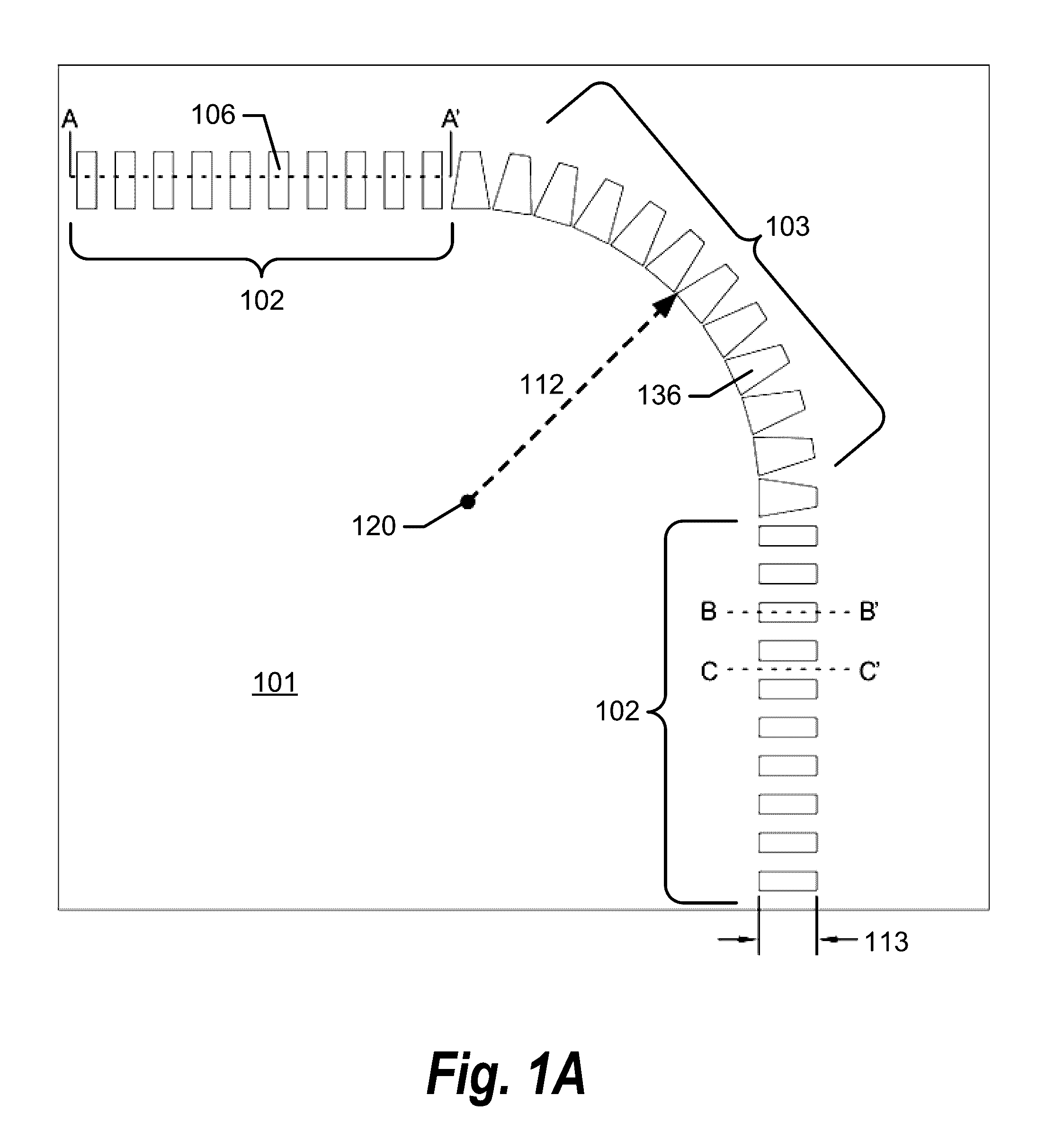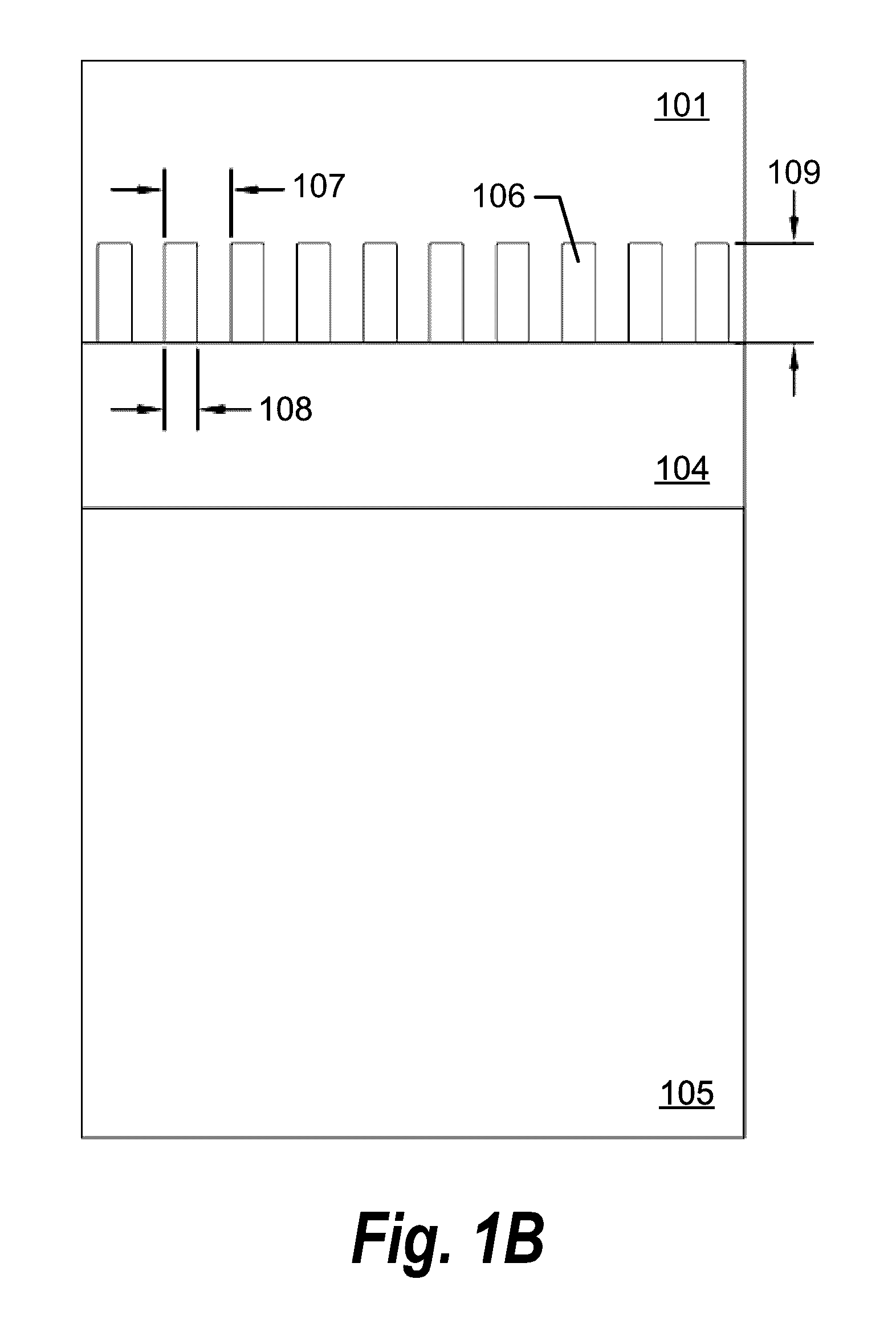Subwavelength photonic crystal waveguide with trapezoidal shaped dielectric pillars in optical systems
a dielectric pillar and optical system technology, applied in the field of optical communication, biological sensing, chemical sensing, etc., can solve the problems of less attractive sensing platform for silicon, large challenge in generating or controlling photons, and increased radiation loss, so as to reduce the loss of bend, increase the loss, and reduce the effect of radiation loss
- Summary
- Abstract
- Description
- Claims
- Application Information
AI Technical Summary
Benefits of technology
Problems solved by technology
Method used
Image
Examples
Embodiment Construction
Detailed Description of the Invention
[0024]Detailed descriptions of the preferred embodiments are provided herein. It is to be understood, however, that the present invention may be embodied in various forms. The specific details disclosed herein are not to be interpreted as limiting, but rather as a basis for the claims and as representative basis for teaching one skilled in the art to employ the present invention in virtually any appropriately detailed system, structure, or manner. In all the accompanying drawings, same numerals are used within each figure to represent the same or similar materials, and redundant descriptions are omitted.
[0025]The invention discloses methods of reducing the loss of subwavelength photonic crystal waveguide bends and high quality factor subwavelength ring resonator based filters, modulators, and sensors. The low loss subwavelength photonic crystal waveguide bends are achieved by optimizing the shape of the dielectric pillars constituting the subwave...
PUM
| Property | Measurement | Unit |
|---|---|---|
| insertion loss | aaaaa | aaaaa |
| radius | aaaaa | aaaaa |
| gap sizes | aaaaa | aaaaa |
Abstract
Description
Claims
Application Information
 Login to View More
Login to View More - R&D
- Intellectual Property
- Life Sciences
- Materials
- Tech Scout
- Unparalleled Data Quality
- Higher Quality Content
- 60% Fewer Hallucinations
Browse by: Latest US Patents, China's latest patents, Technical Efficacy Thesaurus, Application Domain, Technology Topic, Popular Technical Reports.
© 2025 PatSnap. All rights reserved.Legal|Privacy policy|Modern Slavery Act Transparency Statement|Sitemap|About US| Contact US: help@patsnap.com



